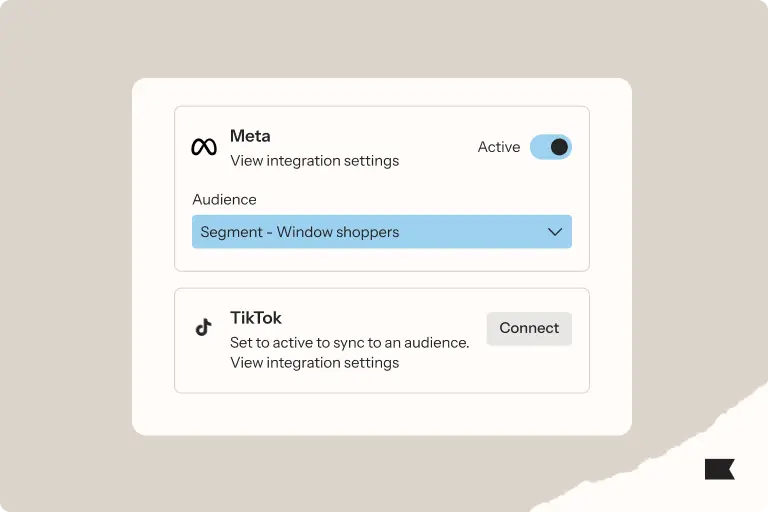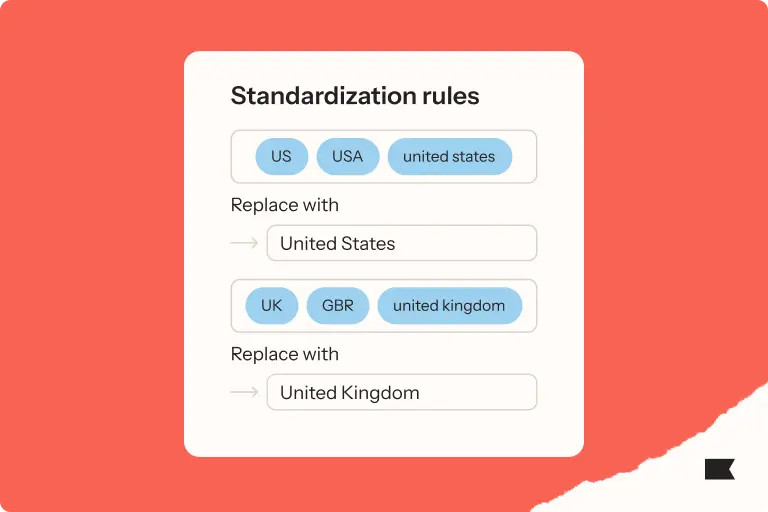
How to use Jobs to be Done theory to create personalized customer journeys

“People don’t want to buy a quarter-inch drill. They want a quarter-inch hole.”
Actually, what they want is to hang a picture on the wall, but Harvard Business School marketing professor Theodore Levitt famously said this, and it’s a perfect encapsulation of Tony Ulwick’s groundbreaking Jobs to be Done (JTBD) theory.
The theory stems from the idea that shoppers don’t focus on a product—they focus on their problem that needs to be solved. First published in 1990, it’s as relevant as ever today.
Think about yourself as a shopper: What’s the last product you bought? What’s the last task you took on—but couldn’t complete without the help of a tool?
These 2 questions may seem unrelated, but, to marketers in the know, they go hand in hand.
According to JTBD, you may “hire” a skincare brand to help you complete the “task” of making sure your face is moisturized. But it’s rarely that simple—maybe you’ve been diagnosed with an allergy, so not just any skincare brand will do.
Or maybe you’ve been researching and feel more adamant than ever that your skincare be non-toxic. Maybe it’s important that any brand you buy doesn’t test on animals. Maybe it’s all 3 of these things, and more.
These considerations are the “jobs” that you need to get done. And whichever skincare brand you choose to buy is the tool that helps you get those jobs done.
At my agency, Polaris Growth, we use JTBD to guide the brands we work with to create incredibly personalized customer journeys.
In this blog, I walk you through exactly how we do it.
The key components of JTBD
The JTBD framework helps brands identify and prioritize customer needs so that they can design products and services that satisfy those needs better than their competitors. It can also help you understand why customers may switch to competing products.
The concept of JTBD consists of 3 main components
The customer’s ultimate desired outcome. They want to achieve this through buying a product or service.
The circumstances and environmental factors that influence the customer’s decision to “hire” a product or service to get the job done.
The emotional, social, and functional factors that motivate the customer to hire a product or service to get the job done.
With those components in mind, the basic premise behind JTBD involves understanding:
1. Your customers’ goals, struggles, and results
Most shoppers’ motivations are either functional, social, or emotional.
- If their motivation is functional, they’re looking for practical or tangible benefits from a product to accomplish a specific job.
- If it’s social, the customer is expecting a product to fulfill their desired identity or status.
- If it’s emotional, the customer is expecting a product to fulfill their emotional or psychological needs.
2. Every step a customer took once their problem got bad enough that they began looking for a solution
You’ll want to find out:
- If they shopped in person or online, or both
- What search terms they used
- What sites they searched on
- Whether or not they crowdsourced brand recommendations on social media
Once you have a detailed understanding of the steps they took, you can specify your customer journey to those different points.
3. What made them ultimately decide to buy your product when they did
A crucial part of using JTBD for more effective marketing is understanding where in the customer journey your audience is.
- Are they browsing—passively or actively?
- Have they already placed an order?
- Do they buy from you several times a year?
4. Why they chose your brand over another solution
Try to get answers to these 3 questions:
- Why did they “hire” you and “fire” the other brand (solution, if it’s not a brand)?
- Specifically, what made them stop shopping with the other brand/solution?
- What made them decide to seek a new solution?
How to put JTBD to use
Here’s how we use JTBD to shape customer journeys and create the most personalized experience possible.
Step 1: Use RFM to segment customers
Segment customers according to recency, frequency, and monetary value (RFM). RFM is the best way to segment people based on behavior, and starting with your very best customers is how you ensure you’ll get a lot of useful data out of your interview process.
Once you know what matters most to those customers, you can create personalized journeys to attract more of them.
Score each customer from 1–3 and create plenty of small segments. For instance, if someone has bought very recently, they’re an R3. If they buy very frequently, they’re an F3. Customers who have spent the largest total amount of money on purchases with you are an M3.
Use this scoring system to understand who your most valuable customers are, and then interview them.
(Note that if you have a much larger audience, you may want to use a scoring system of 1–5 to create more specificity and nuance.)
RFM tip: If you use Klaviyo CDP, RFM analysis comes pre-built for you.
Step 2: Interview your brands’ “soulmates”
Interview your very best customers—those with the highest RFM scores—through the lens of JTBD.
Start by explaining why you’re doing the research, and give an overview on how the interview works.
The goal of the interview will be to create a timeline from the moment the interviewee first thought about buying your products until the moment they finally bought it.
Try to build a timeline from their answers. That timeline might look like:
- First thought
- Passive looking
- Active looking
- Buying
- First use
- Ongoing use
Here are some example questions to get you started:
- Do you remember the first time when you heard about our brand? What was your first thought?
- How did you first hear about us?
- What was the problem you were trying to solve with your shopping? (This question should help you identify their struggle.)
- Were you actively looking for different options at that time to solve your problem or just looking passively?
- Tell us what happened next that led you to actively look for more options.
- What other options did you take into consideration? What products from other brands did you take into consideration before buying from us?
- How did you first find our website? Do you only buy our products online or from other places as well?
- What were the questions you were asking that led you to our brand?
- How long did it take you to decide? Did you make the decision by yourself or talk about it with somebody else as well? If yes, with whom?
- What made you decide to buy our products? What were you hoping would happen as a result of buying them?
- Was there anything that you had to give up but found it worth it for the benefits our brand offers? (This is to see what sacrifices they had to make: money, time, changing their mind, etc.)
- Was anything holding you back before placing the first order?
- When trying to decide to buy from our brand or not, what was your biggest fear?
- Tell us a bit about the experience when you received the product with your order. What were your expectations before receiving the order? Were your expectations met? How did you feel after using our products? What was your goal? Did you reach it?
- What made you buy the second time? What habit did buying our products change? Have you recommended our brand to others? Why? To whom?
Interview tip: This process is both qualitative and quantitative. Ideally, it turns into a conversation. If a customer starts to tell an anecdote that seems unrelated to your products, don’t cut them off. They may end up delivering valuable information about the road that led them to buying your product.
Step 3: Survey less engaged customers
After you’ve interviewed your very best customers, you’ll hopefully get quite a bit of useful information. Next, survey your next round of customers—those who scored a bit lower on RFM than the “very best” customers. (Klaviyo CDP customers, these would be your “Loyal” customers).
It’s crucial that you use the same questions for each segment so that you can properly compare the groups, though it’s okay to rephrase.
Finally, survey the not-so-engaged—those who bought once, exchange products frequently, return multiple times, raise support tickets a little too often, etc.
It’s especially important to gather information about these types of customers so you can see how the super-engaged differ from the non-so-engaged. Once you’ve got all your results in, you can begin to build customer journeys that meet people exactly where they are.
Pro tip: Never incentivize the interview for customers. Your truly engaged customers love talking to your brand, and you’ll get truer results from intrinsically motivated people.
JTBD + RFM = the key to revamping your customer journey
Every marketer needs to understand who their best customers are and what they need. JTBD is one of the most effective ways to reach that understanding, especially when paired with Klaviyo RFM segments. If you’re looking to maximize ROI for all your marketing efforts and maintain sustainable growth, JTBD is the approach to get you there.
Not using Klaviyo CDP? Request a demo to try a 30-day free trial today—your RFM model will be live in less than a few hours.
Want to learn more about how to use JTBD? Schedule a call with Polaris Growth.
Related content
- What is a customer data platform (CDP)?
- 8 smart ways to use your CDP for marketing
- 15 ways to use Klaviyo CDP to drive more Black Friday revenue

Related content

Discover how ecommerce personalisation enhances customer experiences and boosts revenue with real examples and proven strategies.

Discover how one brand used Klaviyo’s Meta integration to build high-intent audiences, lower CPA, and drive 2x conversions through smarter ad targeting.

Learn how to use Klaviyo’s advanced CDP to drive more revenue this BFCM—from real-time personalization and enriched profiles to warehouse syncs, alerts, and custom segmentation.